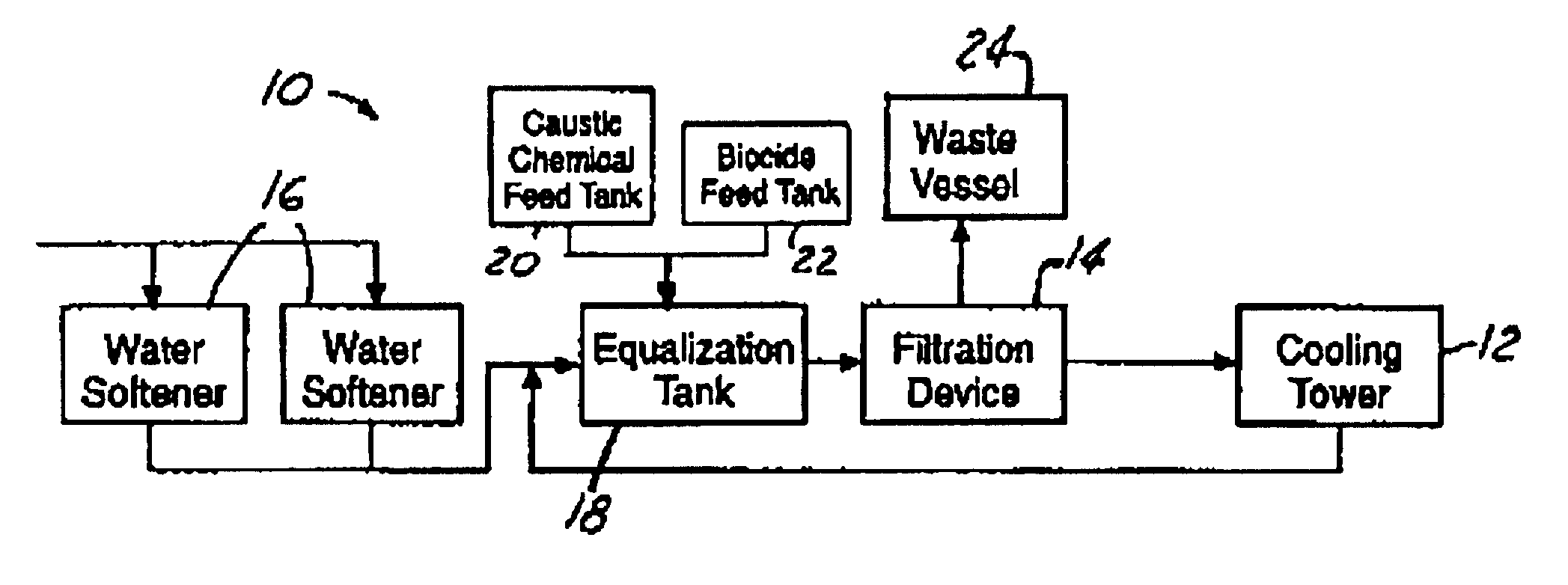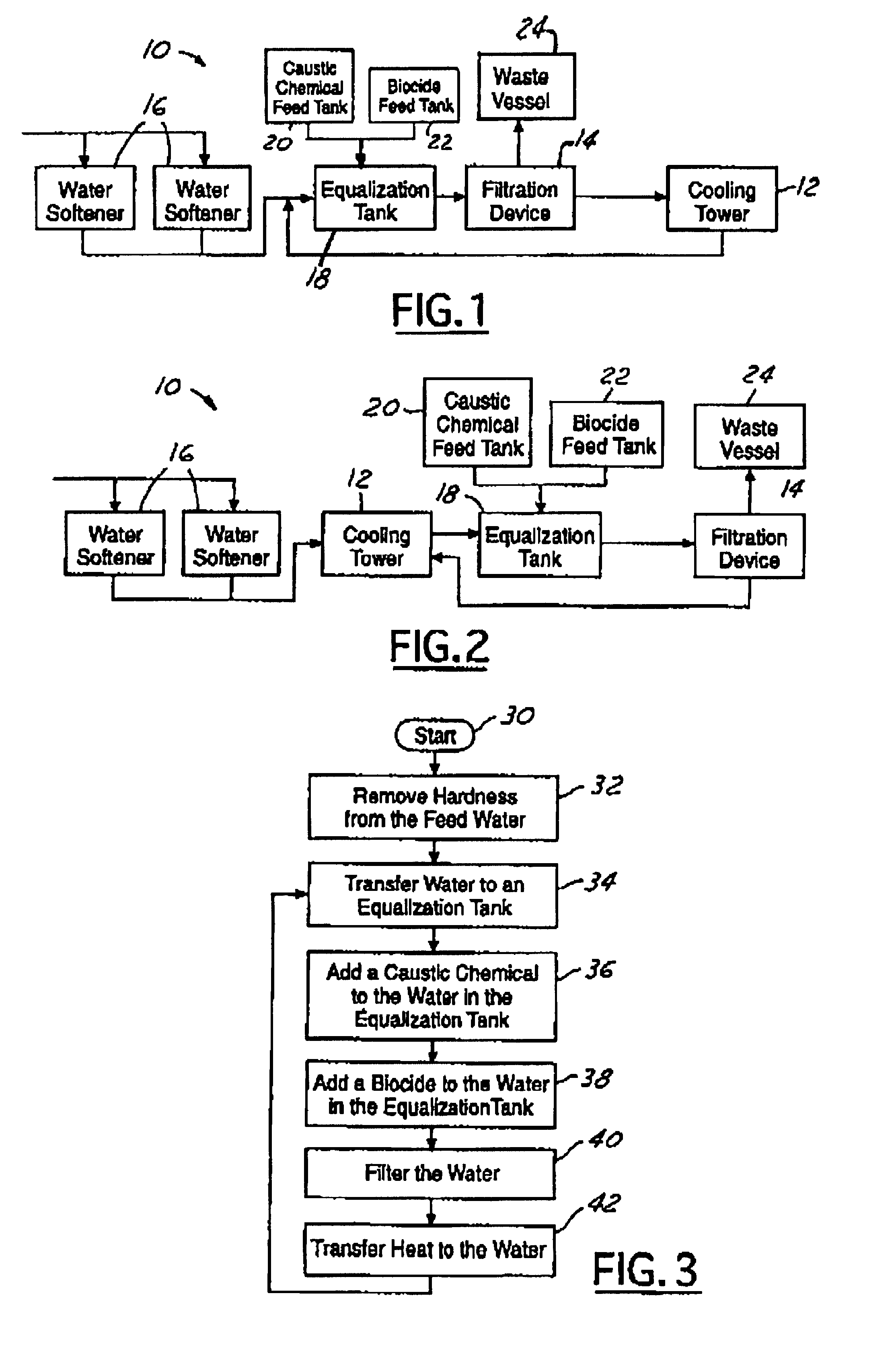Method and system for heat transfer
a heat exchanger and heat exchange technology, applied in the field of heat exchangers, can solve the problems of further reducing the efficiency and affecting the heat exchange rate of the heat exchanger, so as to reduce the cost, preserve heat and energy, and discharge water
- Summary
- Abstract
- Description
- Claims
- Application Information
AI Technical Summary
Benefits of technology
Problems solved by technology
Method used
Image
Examples
Embodiment Construction
In the following figures the same reference numerals will be used to illustrate the same components in the various views. The present invention is particularly suited for a cooling tower 12. However, it is understood that the present invention may be utilized within a variety of other heat exchangers, such as boilers.
Referring to FIG. 1, there is shown a schematic diagram of a system 10 utilizing a filtration device 14 and a water softener 16 for pre-treating feed water and improving the efficiency of a cooling tower 12. Preferably, the system 10 includes two water softeners 16 for pre-treating the feed water before it is used to transfer heat within the cooling tower 12. However, it is understood that the system 10 may instead include only one water softener 16 or more than two water softeners 16 as desired.
The water softener removes hardness employing ion exchange technology. As one skilled in the art will understand, water softeners remove minerals, e.g. calcium and magnesium, fr...
PUM
| Property | Measurement | Unit |
|---|---|---|
| Volume | aaaaa | aaaaa |
| Heat | aaaaa | aaaaa |
| Hardness | aaaaa | aaaaa |
Abstract
Description
Claims
Application Information
 Login to View More
Login to View More - R&D
- Intellectual Property
- Life Sciences
- Materials
- Tech Scout
- Unparalleled Data Quality
- Higher Quality Content
- 60% Fewer Hallucinations
Browse by: Latest US Patents, China's latest patents, Technical Efficacy Thesaurus, Application Domain, Technology Topic, Popular Technical Reports.
© 2025 PatSnap. All rights reserved.Legal|Privacy policy|Modern Slavery Act Transparency Statement|Sitemap|About US| Contact US: help@patsnap.com


